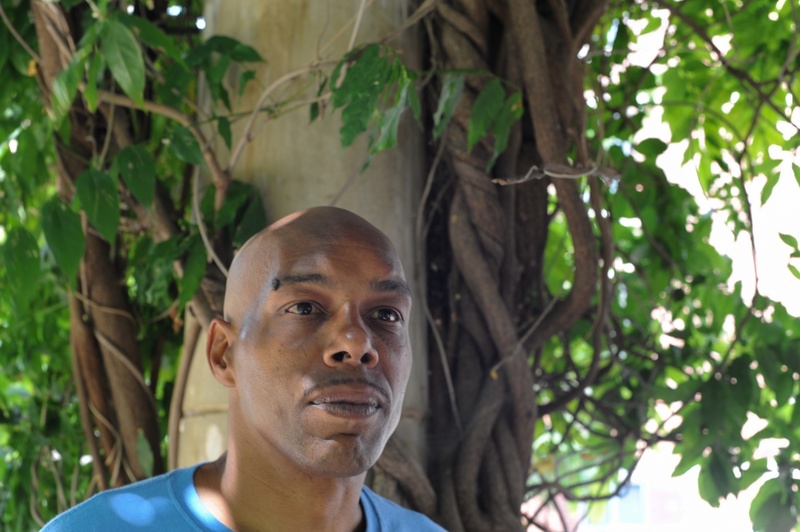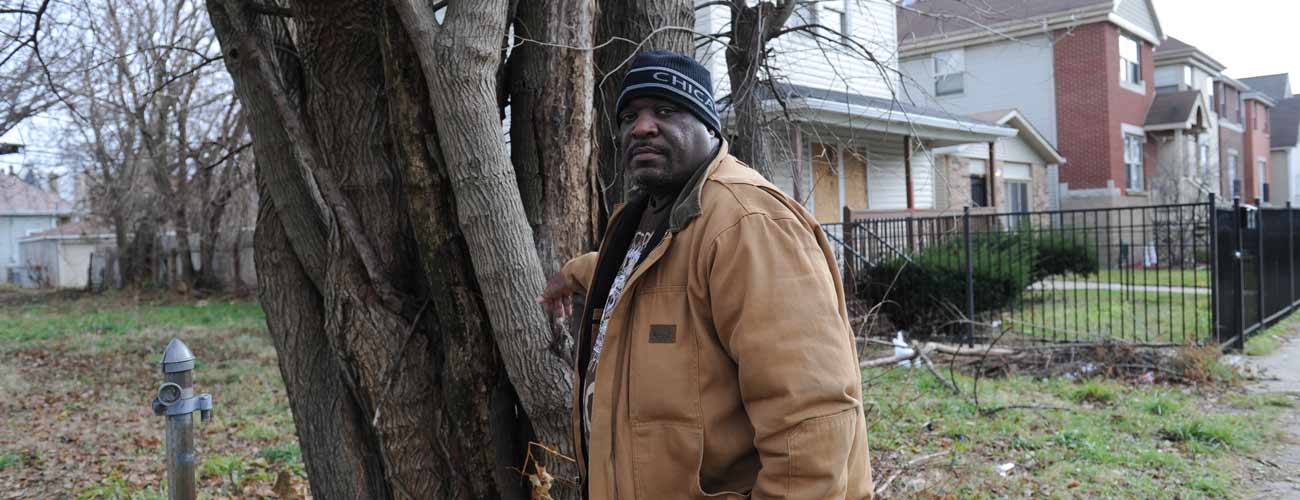Chicago photojournalist Amanda Rivkin is blunt. The men she is photographing were “kidnapped” by municipal police officers and “tortured.”
“You’re at the corner store. Driven to a rail yard. Your testicles are electrocuted,” she says. “This is kidnapping. This is not a normal arrest procedure.”
The events she describes didn’t happen in Azerbaijan or Bosnia or even Turkey, places where the 32-year-old Rivkin has taken photographs for outlets like National Geographic and The New York Times Magazine.
Instead, she’s summarizing the stories of people like Darrell Cannon, one of the scores of black men who have told of abuse and torture at the hands of Chicago police from the 1970s through the early 1990s. Their accounts, which have led to tens of millions of dollars in civil settlements, center around Commander John Burge and the so-called “midnight crew” of detectives under his command, who used violent tactics to coerce confessions. Last year, the City Council acknowledged allegations of torture and abuse from “more than 100” African-Americans in a resolution offering a formal apology and reparations to the victims.
Now Rivkin, who grew up in the city, plans to spend the next year photographing these men and recording their stories. The project, supported a recent grant from the International Women’s Media Foundation, is designed to culminate in a multimedia exhibit that will be shown to the public in Chicago sometime later this year or early next.
“I want to hear their story in their words,” she says. “I am facilitating them getting their story out there. I am recording their voice and editing it for public consumption. But I’m not altering it.”
Rivkin was in elementary school in 1990 when the Chicago Reader published John Conroy’s first story exposing a stunningly brutal system of police torture under Burge. Later in high school, Rivkin rallied against the Illinois death penalty after stories emerged that nearly a dozen men ended up on death row after being tortured into giving confessions. (Rivkin’s godfather is David Protess, the embattled founder of the Medill Innocence Project at Northwestern University, now called the Medill Justice Project, and currently head of the Chicago Innocence Center).
“I just sort of grew up in a house that was very newsy,” she says. “I remember this very well.”
No one did more to expose and advance the story of Burge and his torture ring than Conroy and the Reader, with essential reporting from other media outlets that followed. The Chicago Tribune contributed pivotal work about systemic corruption that stretched from prosecutors to the judges on the bench.
Mike Zajakowski, a Tribunepicture editor, said the paper wrote more than 500 stories on Burge and the related corruption. The paper has hundreds of photos that helped document it, including pictures of victims.
“I’m boggled by it,” he says. “I keep up with the news as it happens, but it’s just overwhelming.”
Zajakowski, who is familiar with Rivkin’s previous work, says she will help document the emotional moments in a story that has had many. “That is something Amanda can bring.”
Conroy, who was laid off from the Reader in 2007, is now a senior investigator at the Roderick and Solange MacArthur Justice Center at Northwestern University. Having the stories of victims all in one place will be “a great thing for the city and a great thing for the victims,” he says, “assuming they don’t mind revisiting what happened to them.”

Mark Clements, who describes being struck repeatedly and having his genitals squeezed by police, spent 28 years in prison before his conviction was vacated in 2009. Photo by Amanda Rivkin, used with permission.
Rivkin says that in between travels for work (last year to Poland, Latvia, Serbia, and Germany), she decided to turn her attention to the Burge victims, a story she’s been wanting to tell for some time. The grant made it financially possible. But the city’s historic reparations deal last year, authorizing $5.5 million to scores of victims, also cleared the way, she says. “The city admitting to it is huge.”
In spite of the time that has passed, her project does not feel dated. The reparations deal came just months before the city lost a court battle to keep private a video that showed a Chicago police officer gunning down teenager Laquan McDonald. The dash-cam video showed a different story than the one police initially told about how the 17-year-old died. It has renewed national scrutiny of the Chicago police and a justice system that continues to be tainted by charges of corruption. Last week, a county judge ordered a special prosecutor for the murder trial of the police officer who shot McDonald.
“All of this we’ve seen before,” Rivkin says. “The layers of procedures, oversight boards and task forces… It’s the same song and dance.”
As part of the reparations resolution, the city pledged to incorporate a lesson about the case and its legacy into the 8th and 10th grade US history curriculum in the public schools by this year. That has not yet happened. A spokeswoman for Chicago Public Schools said teachers and officials will meet in the coming months to come up with a pilot for the fall.
Rivkin hopes her photos and audio could be part of the curriculum.
From media accounts, activists, lawyers, and other records, Rivkin has identified more than 100 victims and is now trying to track them down. She has interviewed five of the men so far. Three are featured on her blog.
“Everybody that’s talked to me has wanted to talk to me,” she says. Some of the interviews have taken 30 minutes, she says; one lasted more than four hours. “I haven’t had to do a hard sell yet. I probably will at some point. The goal is not to retraumatize anyone.”
Rivkin says she’s read and viewed most of the media coverage around Burge, who in 2010 was convicted of lying about the torture in a civil lawsuit—but not of the torture itself, as the statute of limitations had passed—and spent nearly four years in prison and the rest of his sentence in a halfway house.
The stories of victims have been told in that coverage. But often, Rivkin says, the reporting has focused on a corrupt system, with victims’ accounts filtered told through the courts, through lawyers. She sees her work as a sort of oral history, and the men she’s interviewed, she says, tend to see her more as a social worker than a journalist.
“For most of them, TV is the media, and I’m not TV so I’m in a different realm. Because I’m not putting something out there the next day, that it’s for an exhibit. It’s really about their experience and emotion rather than pumping them for facts.”
Rivkin draws a connection between this project, in her home city, to the work she has done around the globe.
“Most of my work is about excesses of state power,” she says. “This is about torture and democracy and how in a democratic system anyone can look the other way.”
Jackie Spinner is CJR’s correspondent for Illinois, Indiana, Ohio, and Wisconsin. She is an associate journalism professor at Columbia College Chicago and a former staff writer for The Washington Post. Follow her on Twitter @jackiespinner.

